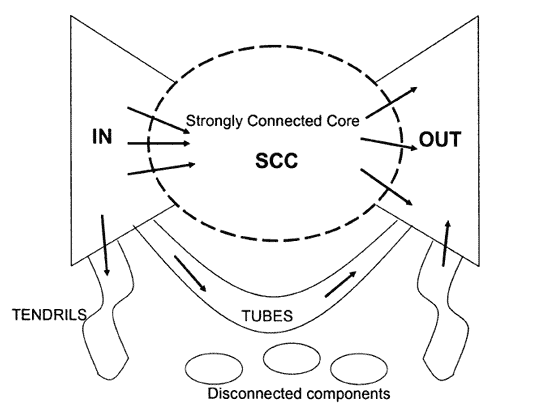In case anyone is wondering why this blog seems so dated compared to the new-ness of this module… it’s because I’m recycling my COM101 blog. Hah! Though I know that’s completely redundant, considering the abundance of space on the Internet. =_=
Since this is the very first post of the blog, I guess I shall go easy on myself…
We went through the basic (but ironically, quite complicated) technical structure of the Internet during our first COM125 class. It's certainly comprehensive, but what I think we kinda missed out on is the GRAPHICAL STRUCTURE of the Internet.
So tada here it is!

http://www.congo-education.net/wealth-of-networks/figure-7-5.gif
The Internet, or so many claim, is shaped like a bow.
1. SCC - large central core of websites
2. Peripheral websites - linked to/from SCC
3. Tendrils and Tubes - slightly more "ulu" websites linked to/from peripheral websites
4. Note: Tubes link to/from Tendrils, but not to the SCC itself!
5. Disconnected components - isolated websites
6. Note: within disconnected components, there may be smaller bows and SCCs!
If I had to give examples of sites in each section above, it would be as follows...
1. SCC - CNN, Facebook
2. Periphery linking in to SCC - personal sites like, uhh, Xiaxue's blog!?
3. Periphery linked from SCC - small, specialised sites like online fishing magazines
4. Tubes linking periphery - academic sites
5. Disconnected components - this blog, haha! Cos I'm not linking in/out.
Very "cheem" on first impression, but I think it's not a bad thing to be able to mentally place websites from the Internet on this graphic map in your head! It gives you clues as to what traits to expect from these websites, and of course, how to go about finding them. =D
1 comment:
ha ha chimah ? :) happy blogging!
Post a Comment